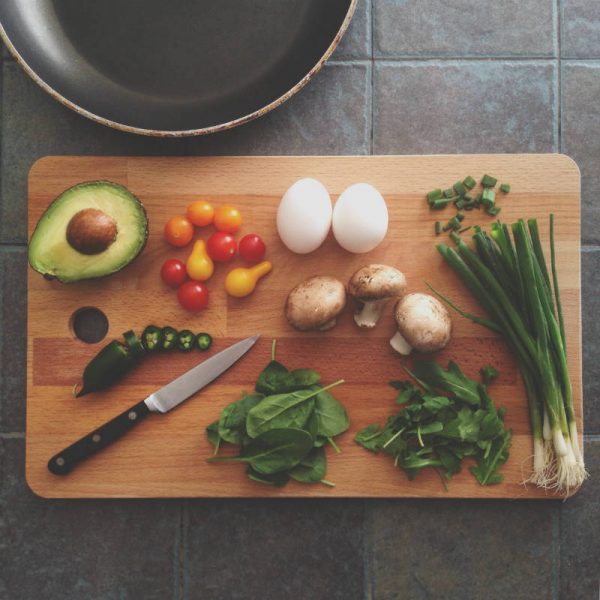
Super Healthy Probiotics
Probiotics are live microorganisms that have health benefits when consumed (1).
These are usually beneficial bacteria that serve some function in the body. Probiotics have all sorts of powerful benefits for your body and brain.They may improve digestive health, reduce depression and promote heart health. Some evidence even suggests that they may give you better looking skin
Getting probiotics from supplements is popular, but you can also get them from foods that are prepared by bacterial fermentation (fermented foods).
Here is a list of 9 probiotic foods that are super healthy.
-
Yogurt
Yogurt is one of the best sources of probiotics, which are friendly bacteria that can improve your health.Yogurt is made from milk that has been fermented by friendly bacteria, mainly lactic acid bacteria and bifidobacterial.
Eating yogurt has been associated with many health benefits, including improved bone health. It is also beneficial for people with high blood pressure (7, 8). In children, yogurt may help reduce the diarrhea caused by antibiotics. It can even help relieve the symptoms of irritable bowel syndrome (9, 10, 11). Additionally, yogurt may be better than milk for people with lactose intolerance. This is because the bacteria turn some of the lactose into lactic acid, which is also why yogurt tastes sour.
However, keep in mind that not all yogurt contains live probiotics. In some cases, the live bacteria have been killed during processing. For this reason, make sure to choose yogurt with active or live cultures. Also, make sure to always read the label on yogurt before you buy it. Even if it is labeled low-fat or fat-free, it may still be loaded with high amounts of added sugar,
-
Kefir
Kefir is a fermented probiotic milk drink. It is made by adding kefir grains to cow’s or goat’s milk. Kefir grains are not cereal grains but rather cultures of lactic acid bacteria and yeast that look a bit like cauliflower.
The word kefir allegedly comes from the Turkish word keyif, which means “feeling good” after eating (12).
In fact, kefir has been linked to various health benefits. It may improve bone health, help with some digestive problems and protect against infections (2, 13, 14).
While yogurt is probably the bestknown probiotic food in the Western diet, kefir is actually a better source. Kefir contains several major strains of friendly bacteria and yeast, making it a diverse and potent probiotic (15).
Like yogurt, kefir is generally well-tolerated by people who are lactose intolerant (16).
-
Sauerkraut
Sauerkraut is finely shredded cabbage that has been fermented by lactic acid bacteria. Sauerkraut is often used on top of sausages or as a side dish. It has a sour, salty taste and can be stored for months in an airtight container.
In addition to its probiotic qualities, sauerkraut is rich in fiber, as well as vitamins C, B and K. It is also high in sodium and contains iron and manganese (17). Sauerkraut also contains the antioxidants lutein and zeaxanthin, which are important for eye health (18).
However, make sure to choose unpasteurized sauerkraut. Pasteurization kills the live and active bacteria.
-
Tempeh
Tempeh is a fermented soybean product. It forms a firm patty, and people have described the flavor as nutty, earthy or similar to a mushroom.
Tempeh is originally from Indonesia, but has become popular all over the world as a high protein meat substitute.
The fermentation process actually has some surprising effects on its nutritional profile. Soybeans are typically high in phytic acid a plant compound that impairs the absorption of minerals like iron and zinc.However, the fermentation process lowers the amount of phytic acid, which may increase the amount of minerals the body is able to absorb from tempeh. Another interesting byproduct of this process is that the bacteria produce some vitamin B12, a nutrient that soybeans do not contain (22, ).This makes tempeh an overall great choice for vegetarians, as well as anyone looking to add a nutritious probiotic to their diet.
-
Kimchi
Kimchi is a fermented, spicy Korean side dish.Cabbage is usually the main ingredient, but it can also be made from other vegetables. A mix of seasonings is used for flavor, such as red chili pepper flakes, garlic, ginger, scallion and salt.
Kimchi contains the lactic acid bacteria Lactobacillus kimchii, as well as other lactic acid bacteria that may benefit digestive health (25, 26). Kimchi made from cabbage is high in some vitamins and minerals, including vitamin K, riboflavin (vitamin B2) and iron.
-
Miso
Miso is a Japanese seasoning.
It is traditionally made by fermenting soybeans with salt and a type of fungus called koji. Miso can also be made by mixing soybeans with other ingredients, like barley, rice and rye.This paste is most often used in miso soup, a popular breakfast food in Japan. Miso is typically salty, and you can buy it in many varieties, such as white, yellow, red and brown. Miso is a good source of protein and fiber. It is also high in various vitamins, minerals and phytonutrients, including vitamin K, manganese and copper.
Miso has also been linked to some health benefits. One study reported that frequent miso soup consumption was associated with a lower risk of breast cancer in middle-aged Japanese women (27). Another study found that women who ate a lot of miso soup had a reduced risk of stroke (28).
-
Pickles
Pickles (also known as gherkins) are cucumbers that have been pickled in a solution of salt and water. They are left to ferment for some time, using their own naturally present lactic acid bacteria. This process is what makes them sour.
Pickled cucumbers are a great source of healthy probiotic bacteria, which may improve digestive health. They are low in calories and a good source of vitamin K, an essential nutrient for blood clotting. Pickles also tend to be high in sodium.
It is important to note that pickles made with vinegar DO NOT contain live probiotics.
-
Natto
Natto is another fermented soybean product, like tempeh and miso. It contains a bacterial strain called Bacillus subtilis. Natto is a staple in Japanese kitchens. It is typically mixed with rice and served with breakfast.It has a distinctive smell, slimy texture and strong flavor. Natto is rich in protein and vitamin k2 which is important for bone health and cardiovascular health (30, 31).
A study in older Japanese men found that consuming natto on a regular basis was associated with higher bone mineral density. This is attributed to the high vitamin K2 content of natto (32).Other studies suggest that natto may help prevent osteoporosis in women (33, 34).
-
Cottage Cheese
Although most types of cheese are fermented, that does not mean that all of them contain probiotics. Therefore, it is important to look for live and active cultures on the food labels. The good bacteria survive the aging process in some cheeses, including Gouda, mozzarella, cheddar and cottage cheese (35, 36).



